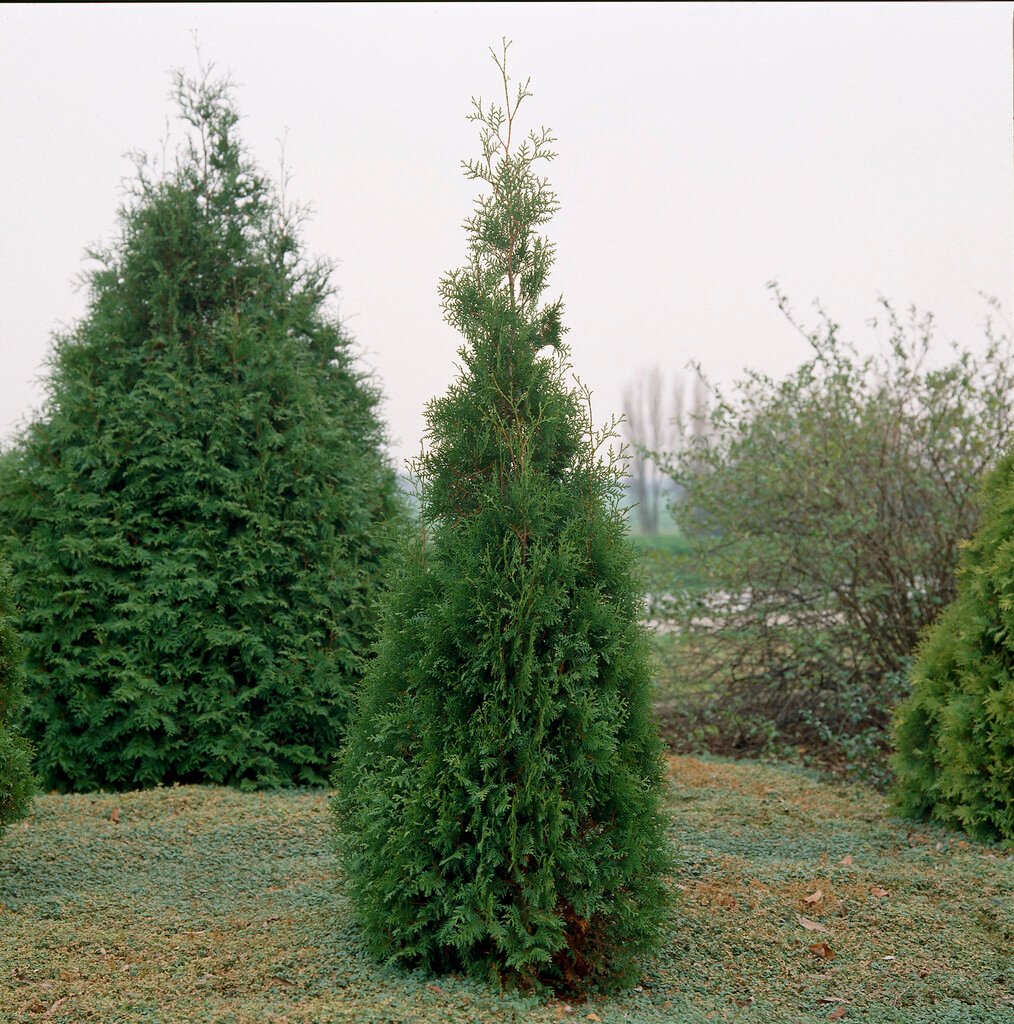Thuja occidentalis 'Brabant'
white cedar 'Brabant'
An evergreen conifer with reddish-brown bark and a conical shape that can also form a dense hedge. Has yellowish-green foliage that turns slightly bronze in autumn but in gerneral maintains the same colour all year round, light brown scaly cones and insignificant flowers in spring. Fast growing and shade tolerant.

Buy this plant
Size
Ultimate height
4–8 metresTime to ultimate height
5–10 yearsUltimate spread
2.5–4 metresGrowing conditions
Moisture
Moist but well–drainedpH
NeutralColour & scent
| Stem | Flower | Foliage | Fruit | |
| Spring | Green | |||
|---|---|---|---|---|
| Summer | Green | |||
| Autumn | Green | |||
| Winter | Green |
Position
- Full sun
- Partial shade
Aspect
South–facing or East–facing or West–facing or North–facing
Exposure
Exposed or ShelteredDrought resistance
Yes Hardiness
H7Botanical details
- Family
- Cupressaceae
- Native to GB / Ireland
- No
- Foliage
- Evergreen
- Habit
- Columnar upright
- Potentially harmful
- Harmful if eaten, skin allergen. Wear gloves and other protective equipment when handling
- Genus
Thuja are fast-growing evergreen trees of narrowly conical habit, with flat sprays of tiny, aromatic, scale-like leaves and small knobbly cones
- Name status
Accepted
How to grow
Cultivation
Grows well in fertile well-drained soil, avoid waterlogging.
Propagation
Propage by semi-hardwood cuttings.
Suggested planting locations and garden types
- Architectural
- City and courtyard gardens
- Low Maintenance
- Hedging and screens
Pruning
Prune to maintain shape.
Pests
May be susceptible to scale insects and cypress aphid.
Diseases
May be susceptible to honey fungus and other fungal diseases, particularly thuja blight and Coryneum canker (see conifers: brown patches)
Get involved
The Royal Horticultural Society is the UK’s leading gardening charity. We aim to enrich everyone’s life through plants, and make the UK a greener and more beautiful place.